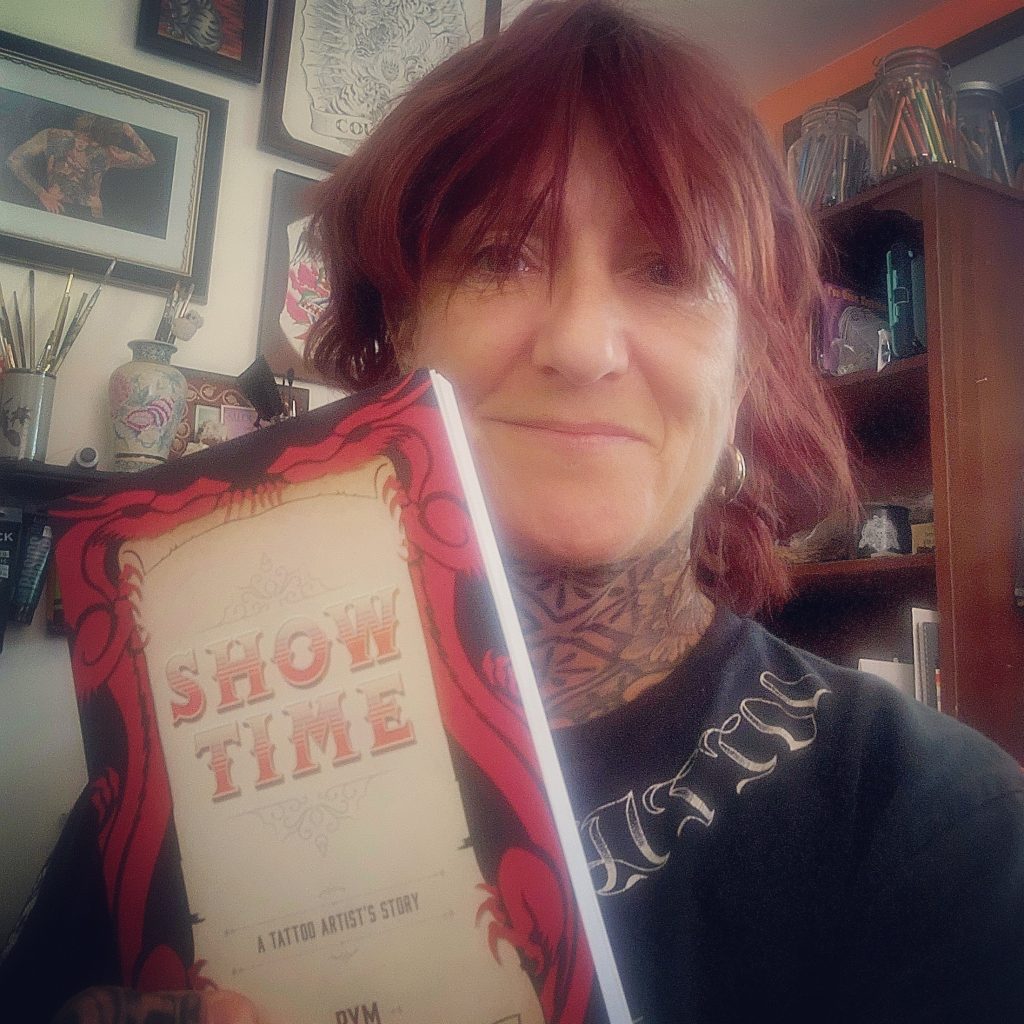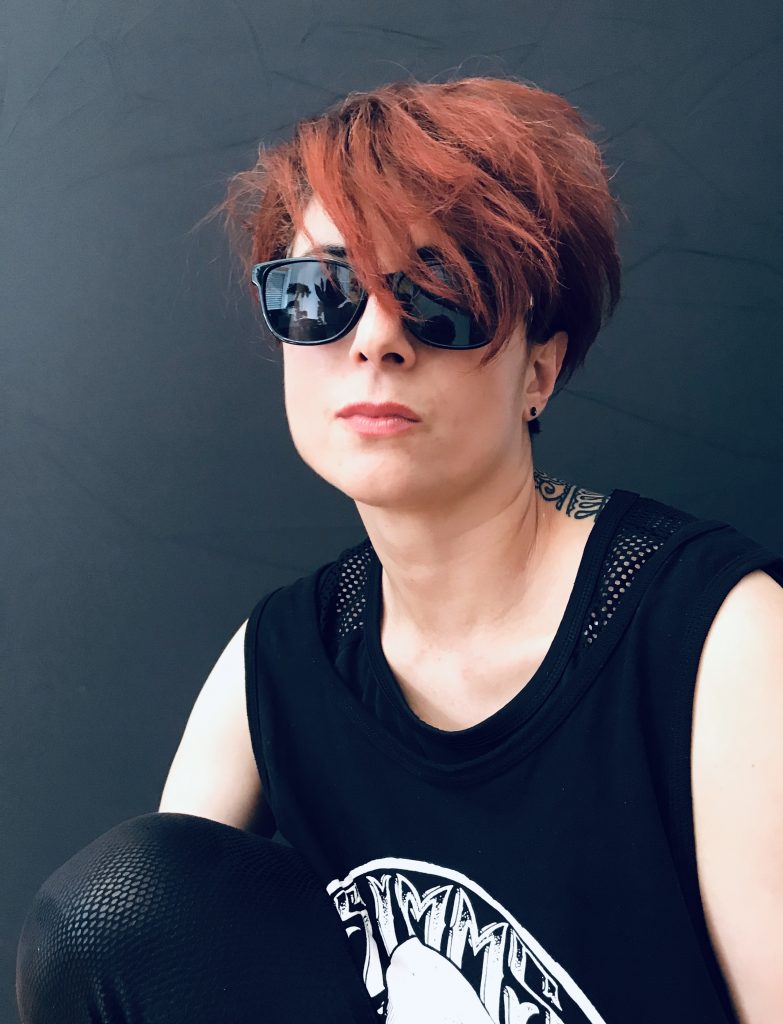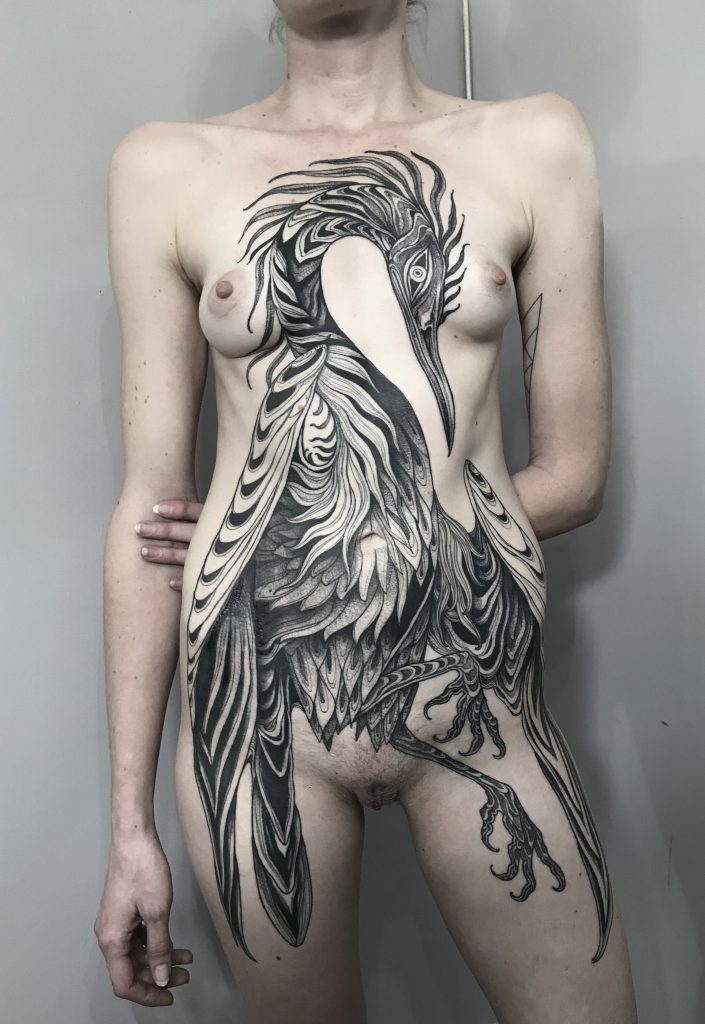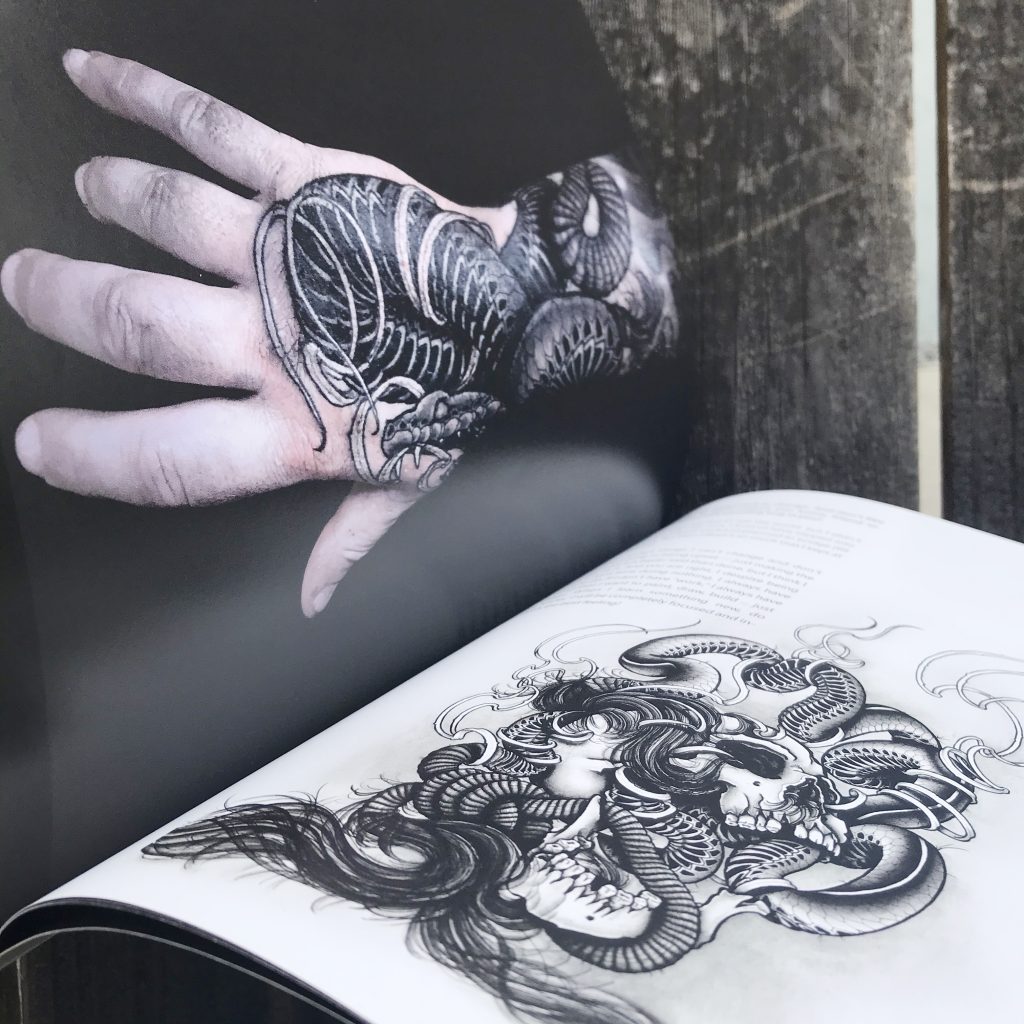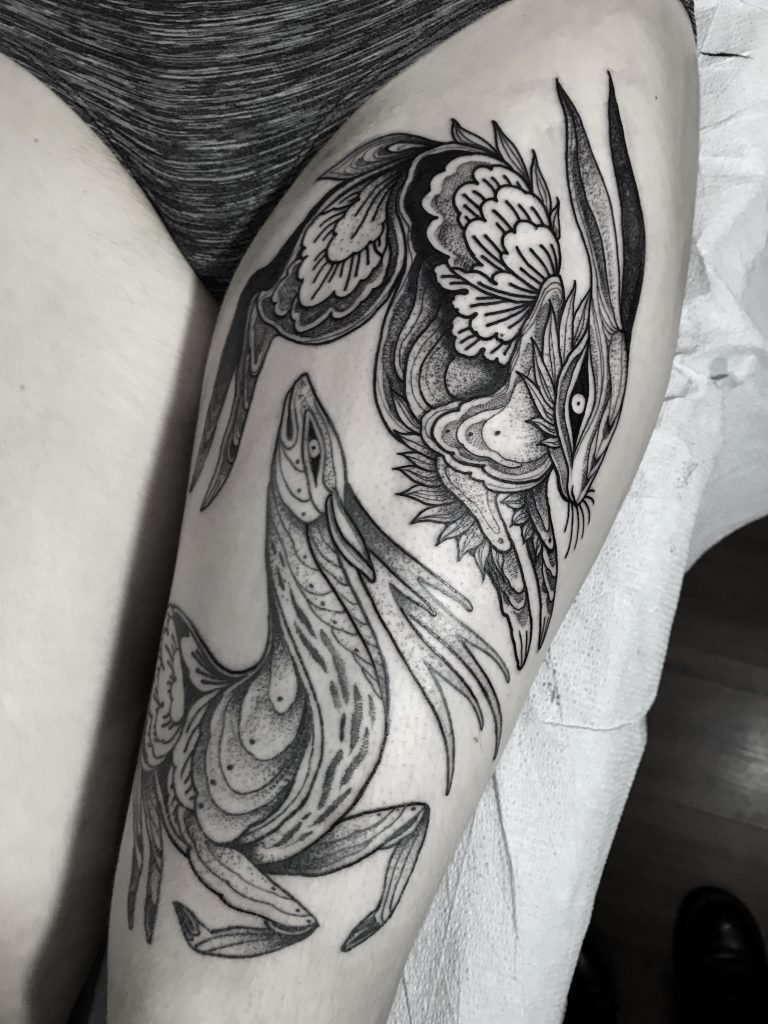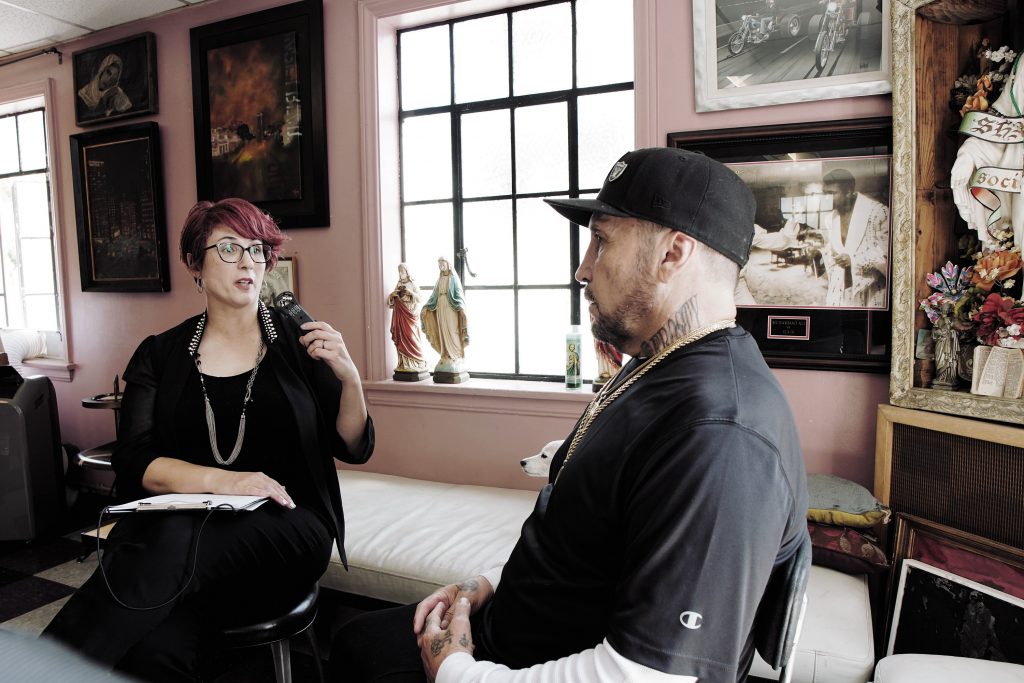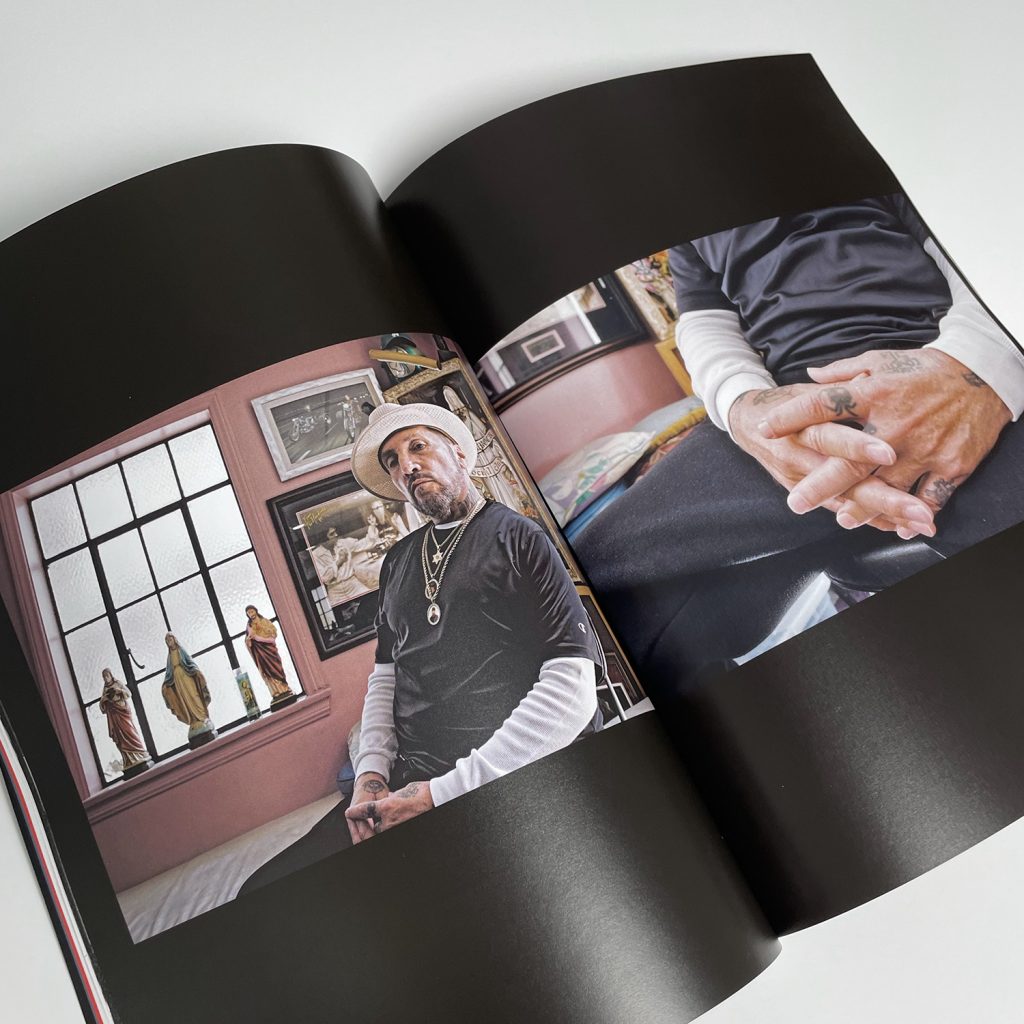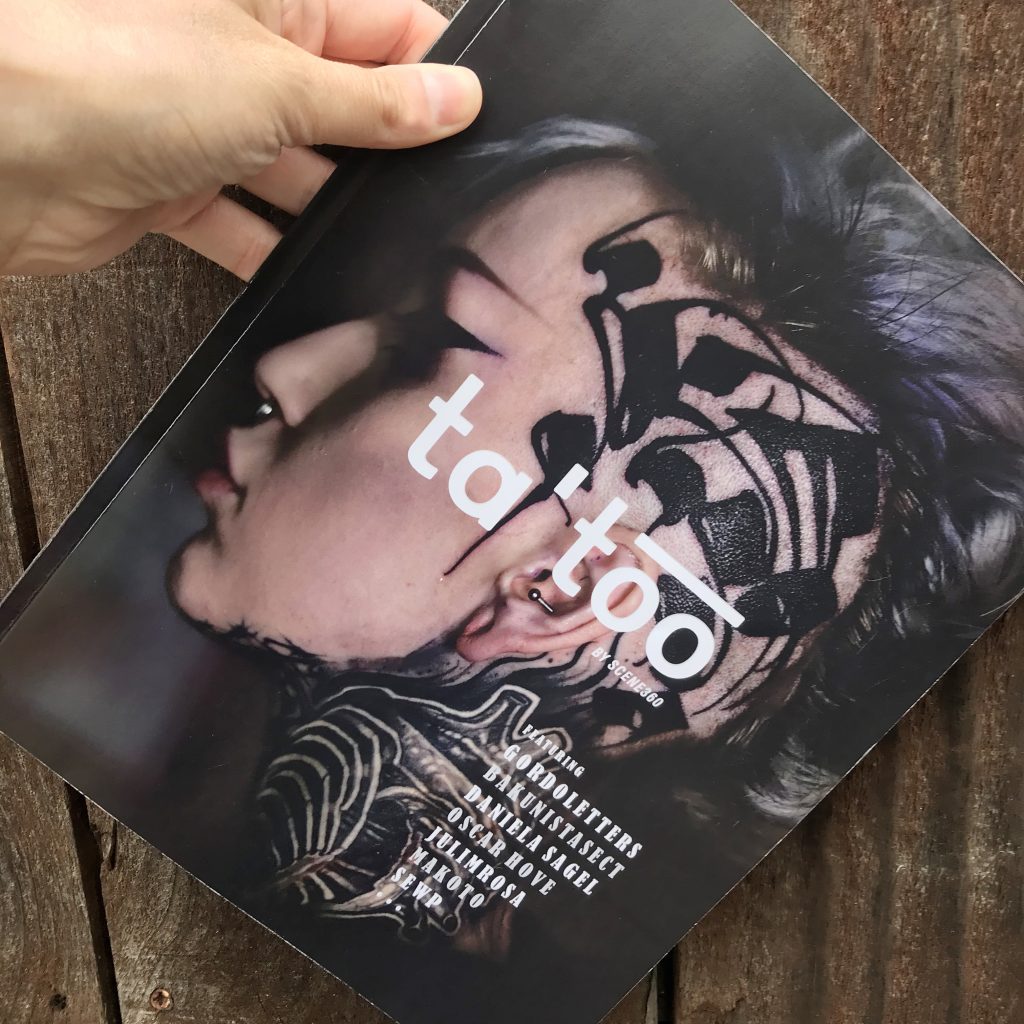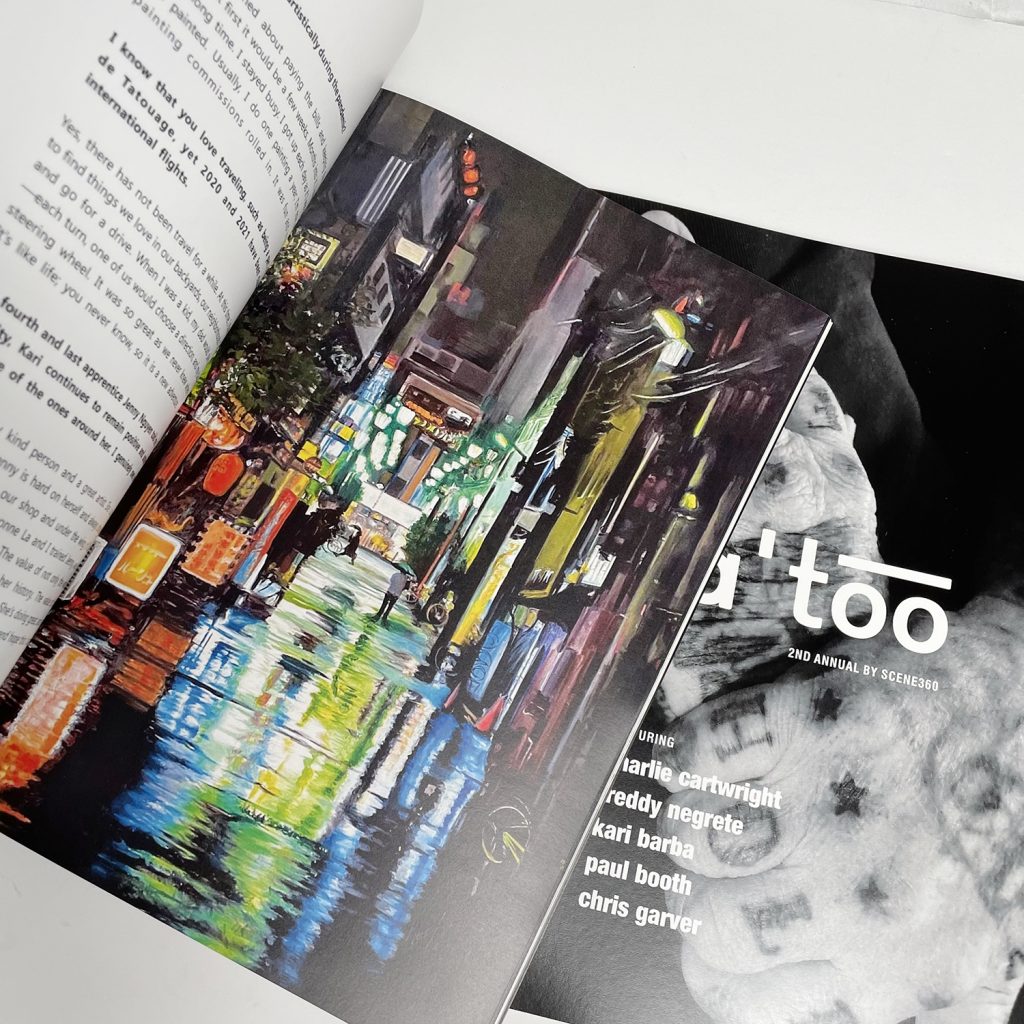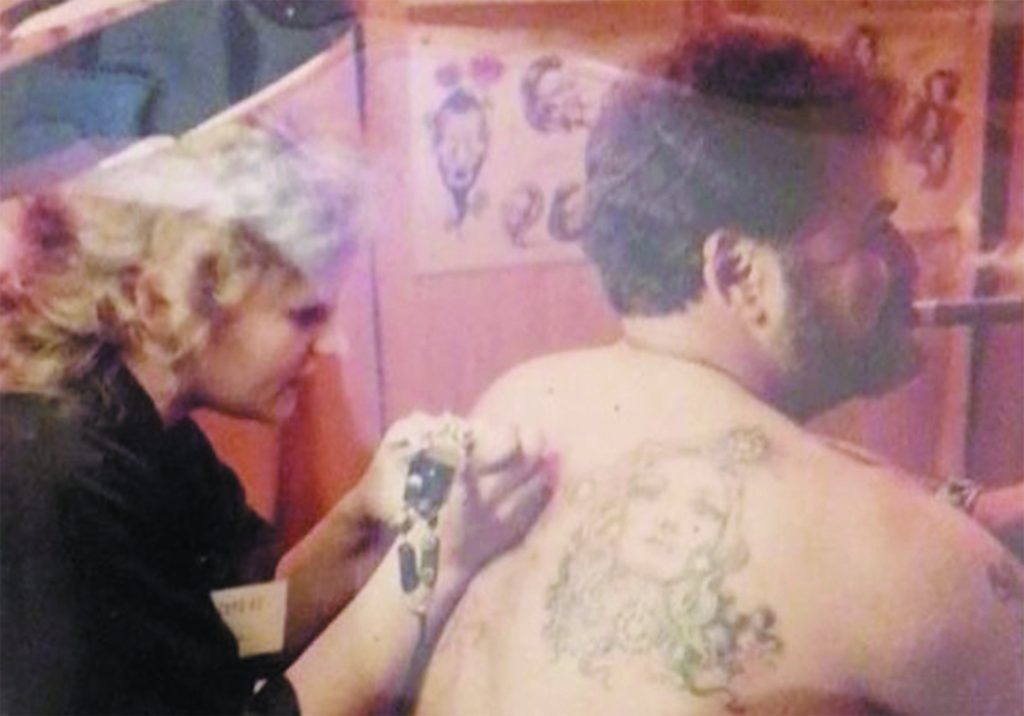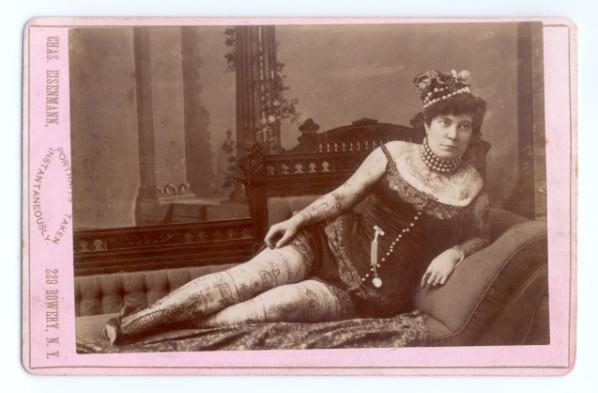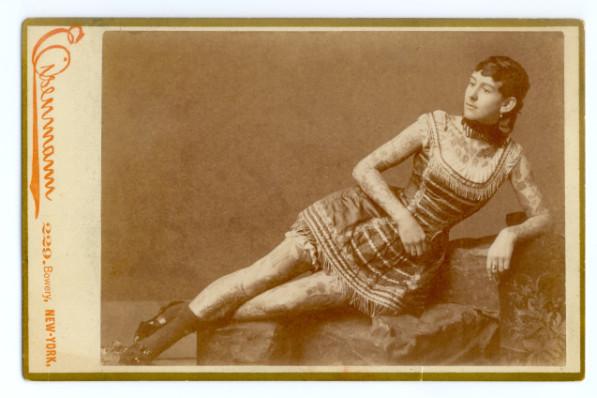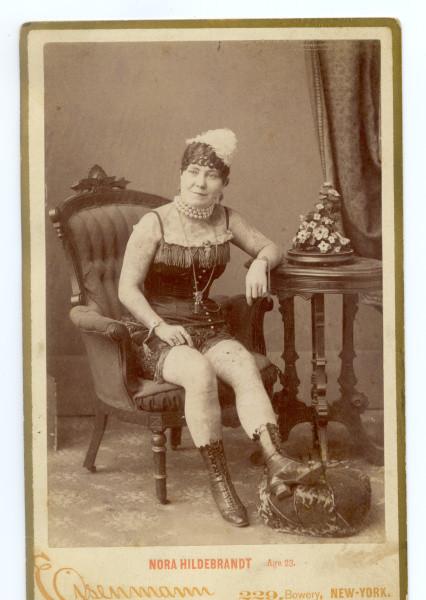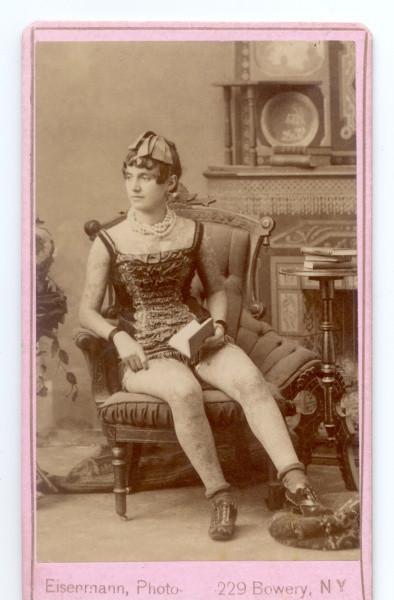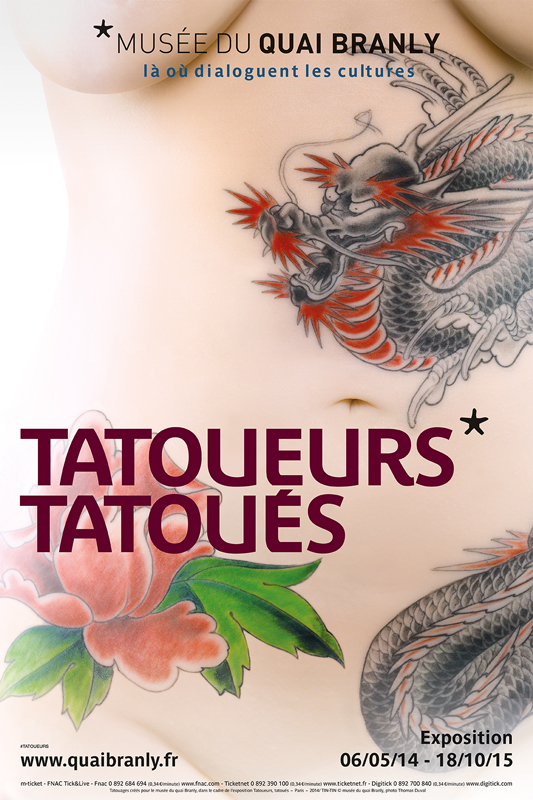Pym Avery started tattooing back in the ’80s. She wasn’t welcome. It didn’t stop her. She’s still tattooing now, although not fulltime. She’s just written a book, Show Time, documenting the decades of her life that she dedicated to teaching herself to tattoo. Breaking down barriers along the way. This is her story…
“I started tattooing on the road in Europe in 1987, when I was 19 years old. I’ve since travelled all over the world and worked in many places; it has been one long and amazing adventure. In that time, I watched the tattoo trade evolve from a shadowy ill-respected environment to a multi-billion-dollar industry.”
“There were only a few women tattooing during the ‘80s and ‘90s, mostly in North America. I met one of those pioneers, Madame Vyvyn Lazonga, in Seattle in the early 2000s and she suggested that I should write a book about my early days. At the time, I thought that no one would read such a story, but the seed stayed in my mind until 2024 when I decided to stop talking about writing a book and just do it.
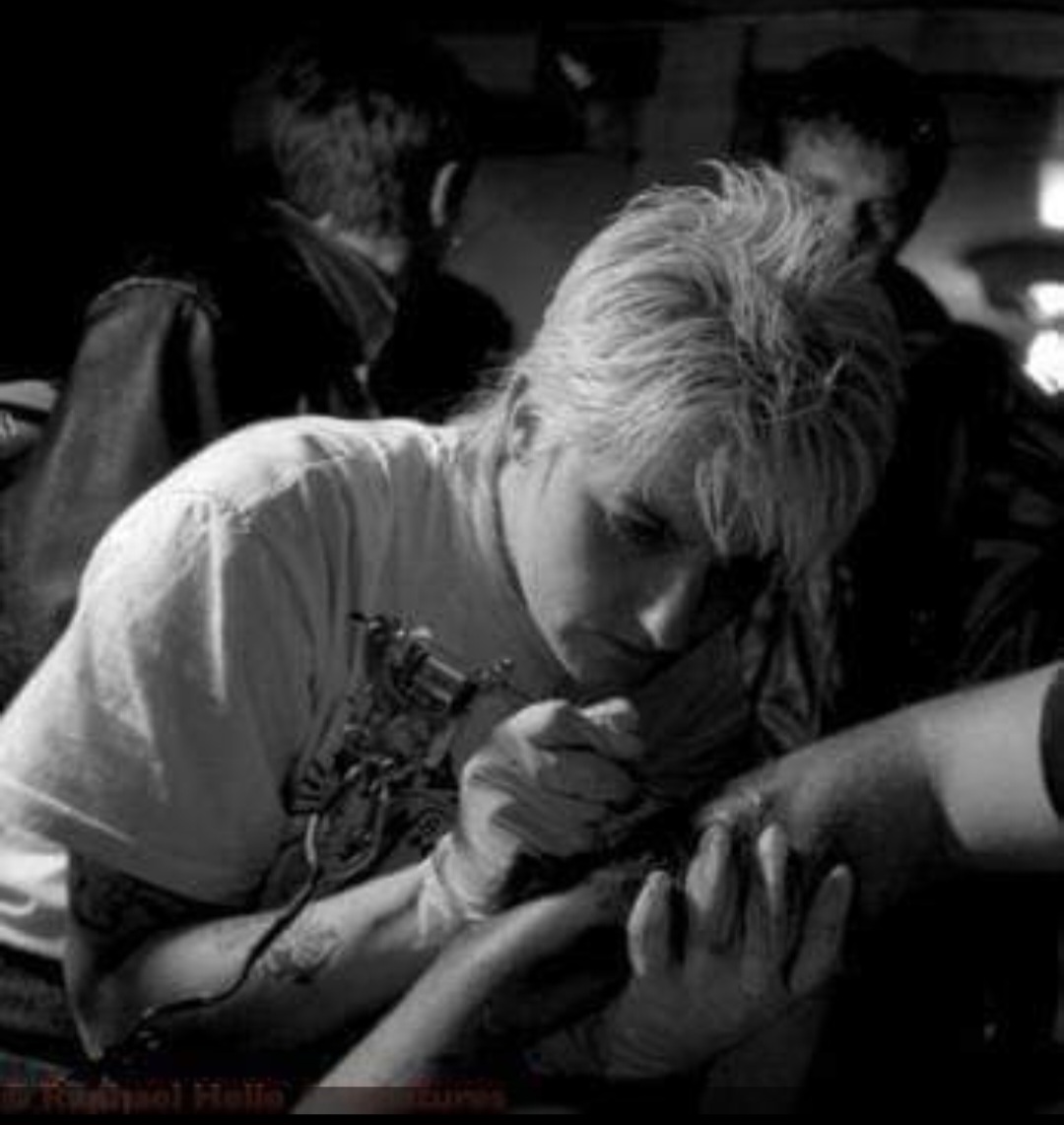
Photo credit Rafael Helle
“It was hard to get away from my daily grind and all its distractions but I found an opportunity house-sitting for friends on a remote island in the Caribbean where I didn’t know anybody and spent three weeks immersing myself in the memories of the ‘80s and ‘90s – the ‘Golden Age’ of tattooing as some call it – and putting it all down in black and white.
“Trying to find a title wasn’t easy, but I settled on Show Time because that was always what I called going to work; game face, even if you are not quite feeling it! It also fit well with the carnival and convention scenes that I worked in during that time. I then self-published the book using independent small businesses.
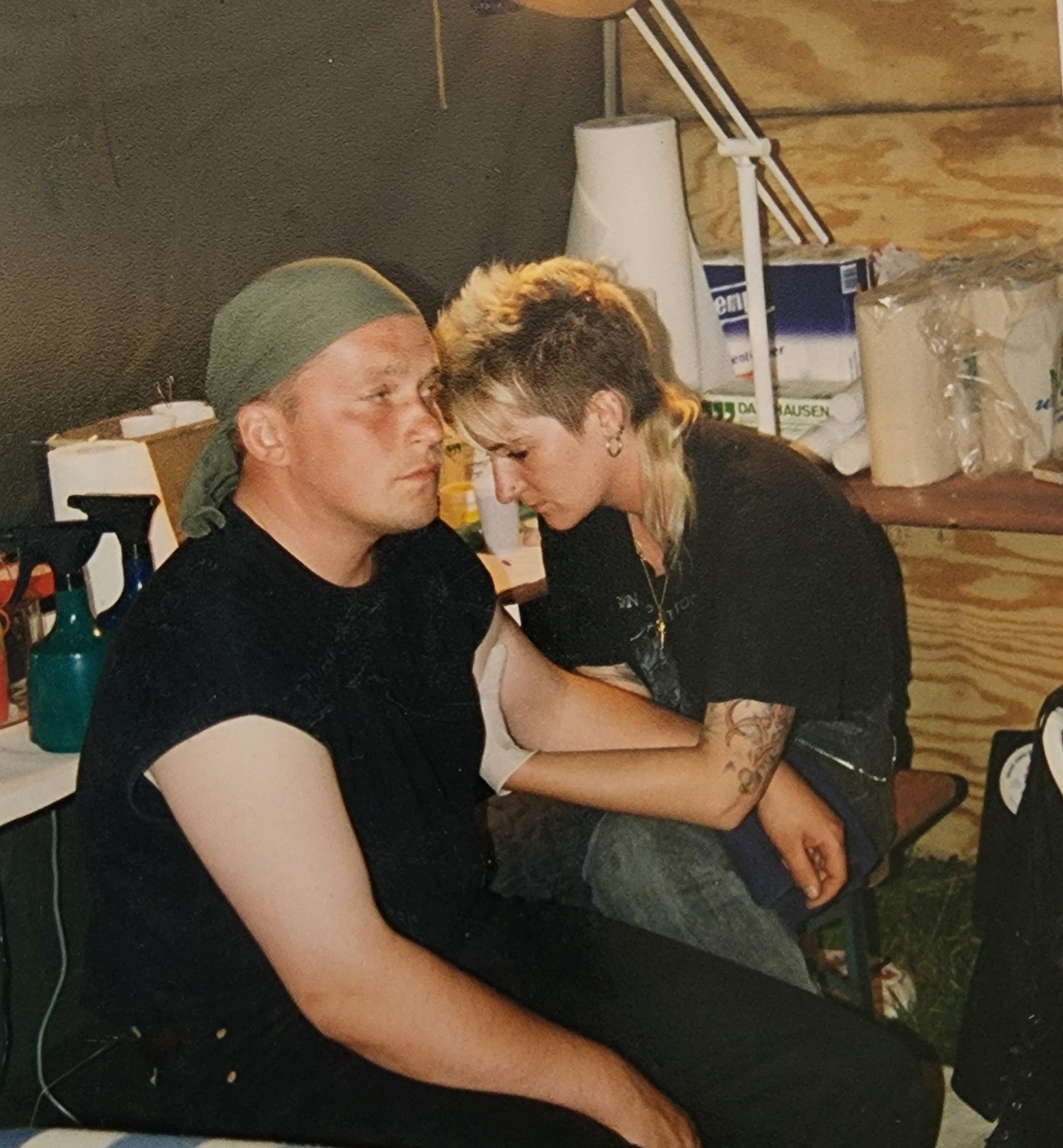
“Show Time is the story of teaching myself to tattoo in the male-dominated environment of the 1980s in Europe – when women were not welcome in tattoo shops. I became interested in learning to tattoo in 1987 after I met a traveling tattoo artist in the South of Spain, who informed me that women do not do tattoos when I asked him to teach me. I was very curious about both the ability to earn money from art while travelling and why women would not be able to do it.
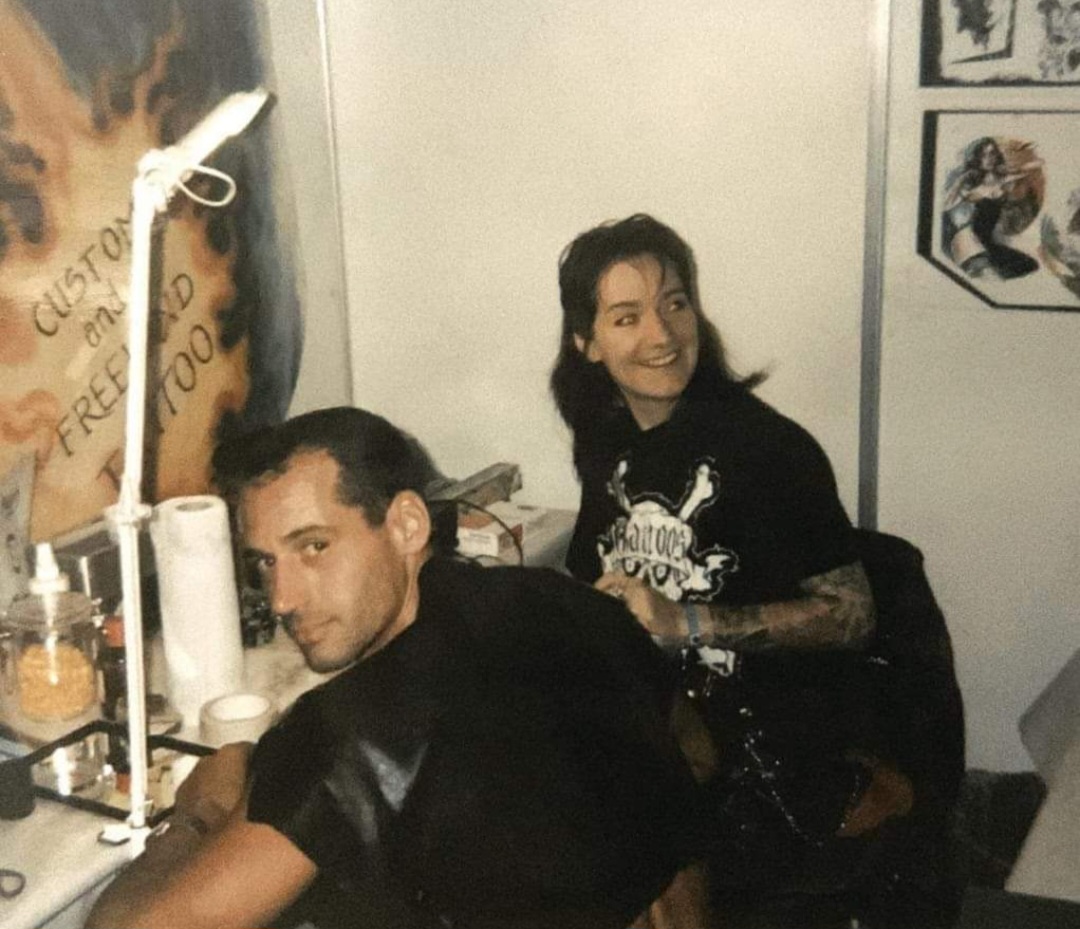
“At that time the tattoo scene, such as it was, was the domain of bikers and ‘manly men’ and there were indeed very few females practicing the art. It was almost impossible to learn any information about it without being connected, and very impossible to buy supplies as there were so few tattooers that everybody knew everybody else or at least knew of them. There was no internet or social media, and only a handful of suppliers worldwide. Orders were made by phone and arrived weeks later. Apprenticeships were almost impossible to find, the tattoo trade and its secrets were heavily protected against infiltration by rank outsiders; you had to know someone who knew someone.
“It was a huge challenge, and I was determined to rise to it, but once I had acquired the necessary equipment to do the job, I would find out that the general public did not think that women could do tattoos either.
Newspaper article from a Swiss convention 1995. ‘A man’s profession.’
“Traveling in Europe tattooing out of my small van, I finally managed to find a way to break the ice and was loosely adopted by the Feria or carnival which made the rounds of Southern Spain each year. After tattooing with the Feria for a while, I made my way into tattoo shops and access to the information I needed to round out my tattooing ability.
“As my career evolved, I became a part of the ‘90s international tattoo convention scene, which was a superhighway of information and learning, as well as the time at which tattooing began to break out of the Dark Ages and become a recognised art form worldwide. I opened my first tattoo shop in Germany in 1995.
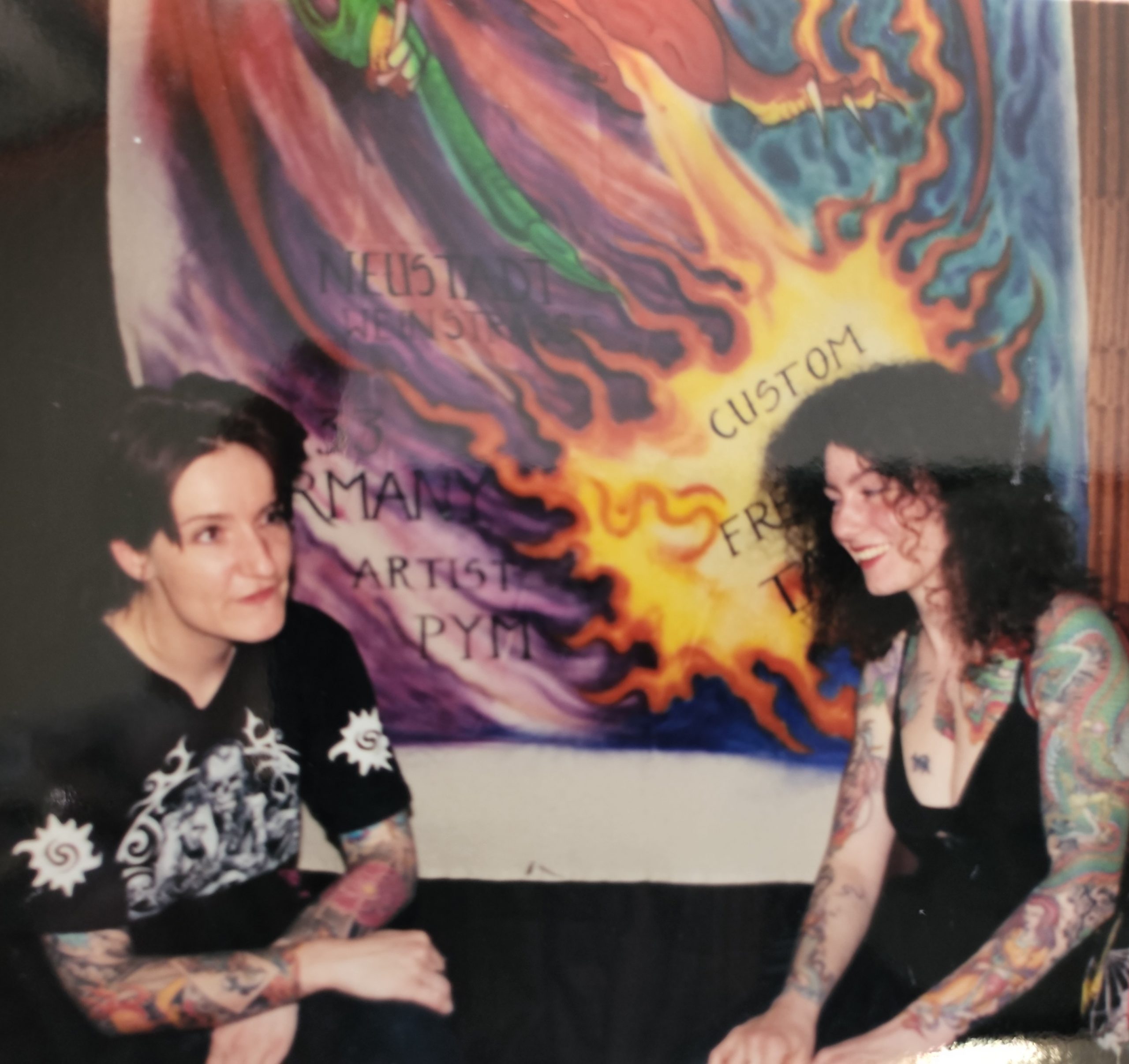
“The book itself, aside from being my personal story, is intended to be an inspiration for anybody wanting to become a tattoo artist despite all the pitfalls. The fact that the equipment and the necessary information for using it properly is now widely available does not bypass all the personal struggles, the challenges of dealing with the client’s expectations, or the self-employed aspects of the business. I wanted to give that perspective from my point of view, despite the fact that times have changed so radically. I think it is still valid. I also wanted to mention the women who had come before me, because I know that what they had to deal with was incrementally harder than what I faced, and I feel that we all owe them a lot of respect for that.
“When tattoo conventions became popular in Europe in the 1990s, there were only a few female tattoo artists working at them, and we experienced a lot of disrespect from both sides of the booth. TV, radio, and newspaper interviews began to focus on the female tattooers and then we became published in magazines, and finally the disrespect began to melt away. It took a lot of determination and thick skin, but by the mid ‘90s, women had their own shops and were finally being recognised for their contribution to the trade.
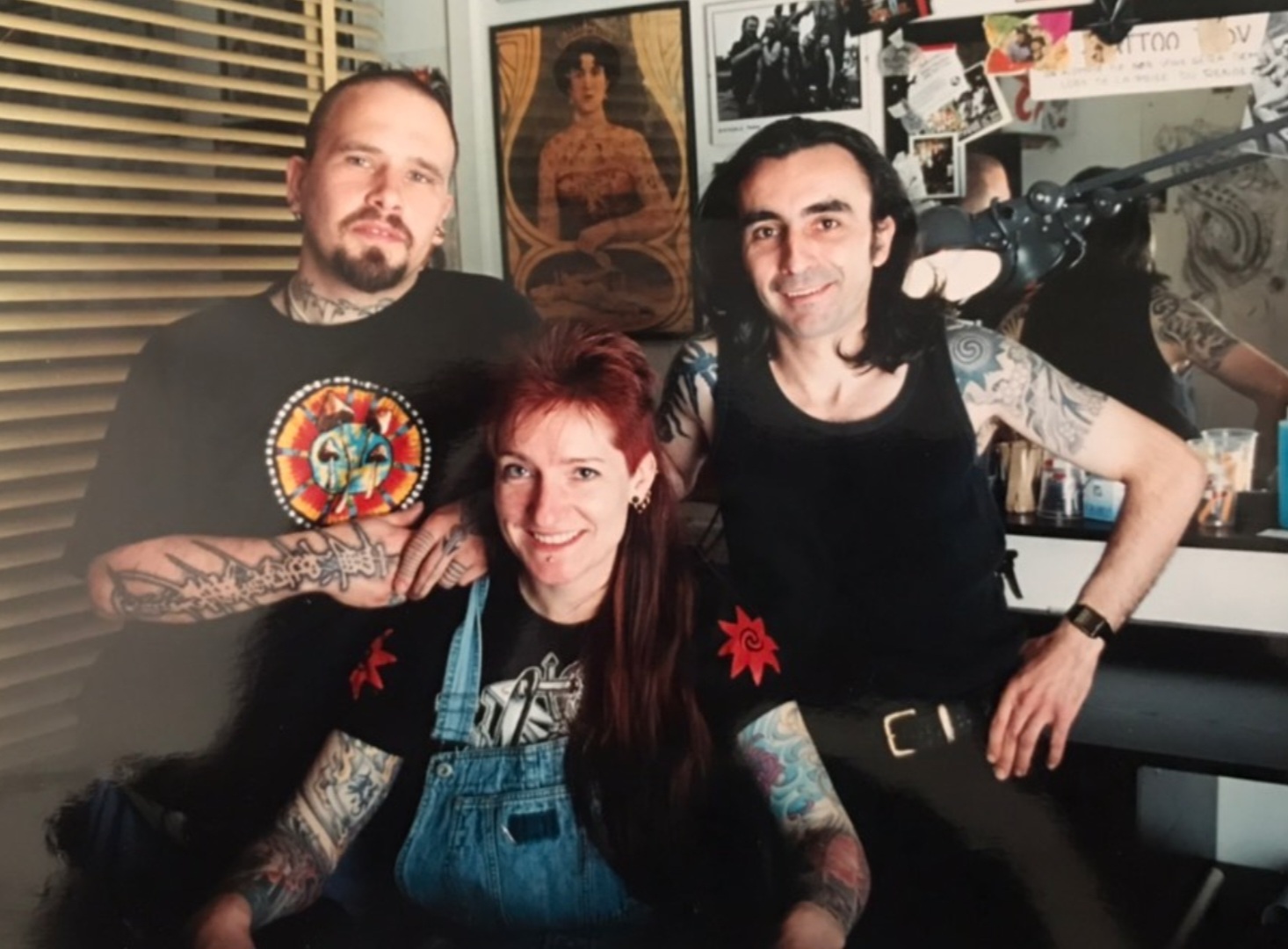
“As the internet began to become accessible to all, bridges could be built more easily across the world, and the barriers to women in the tattoo business as well as its overall male stranglehold began to come down quickly. The advent of TV shows about tattooing and the popularity of Kat Von D saw a dramatic increase in the numbers of women in the trade in the early to mid 2000s and I suspect encouraged a lot of the new generation of women, who were young girls at the time. My book does not cover any of this more recent time period as I left Europe in 2000 and moved to the United States, which seemed like a good point to finish that part of the story.
“Times and tattooing have definitely changed exponentially since the “Last Century.” I think for older tattoo artists, it is hard to stay relevant in this modern world dominated by social media, but I do feel that we can learn from the new generation in the same way that they can learn from us, through the exchange of ideas and a good communication base, which is now so much easier to achieve than the pre-internet days.
“I hope to change the direction of some of the narrative about Gatekeepers, which is becoming more prevalent on the internet by highlighting a lot of what my generation of tattooers went through to learn the tattoo trade with no easy access to information and equipment and explain what actual Gatekeeping looked like back then. There is very little comparison between how it was to get into tattooing then and now, but we are, after all, doing the same thing with the same goals.
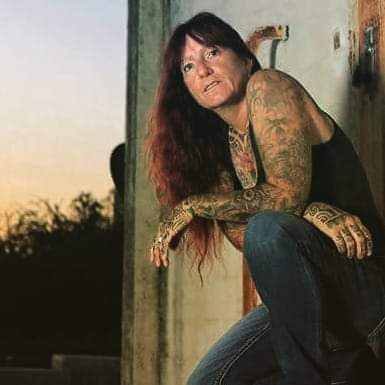
“To me, the 1990s changed tattooing in the most substantial way, taking it to new levels and a fresh public perspective. Tattoo artists of the time tried, tested and investigated many different avenues of what tattoo machines could do in the skin and forged a solid path. That research and application opened the doors to many and varied machine types, needle groups, colours, techniques, and styles. Artists with college degrees and different perspectives have now taken it to a whole new level.
“As for myself, I still work in all styles, as I have done since day one, so it is interesting to observe the evolution of it all and I am curious to see what the next decade brings. I do not tattoo full time anymore outside of conventions and guest spots, due to the toll that tattooing has taken on my body; it is real, folks! Look after your back and your hands!”
Signed copies of Show Time are available from showtimebook.bigcartel.com. Printed version, eBook as well as audiobook can be found online anywhere you get your books!

